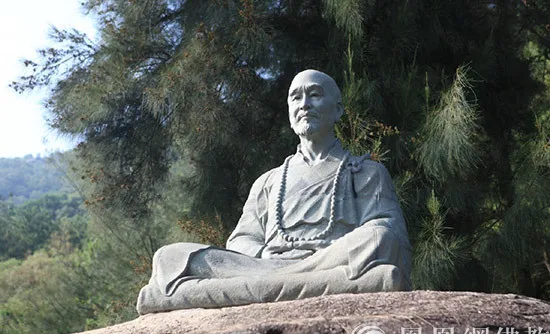In daily life, many people may unconsciously put one leg on the other leg as soon as they sit down, and the stilted legs may make people feel very comfortable. But in the long run, you become a senior member of the "StiltEd Erlang Leg Sedentary Family". As everyone knows, this is a bad habit, which is not only very impolite, but also harmful to physical health.

Image source: Phoenix Buddhism
note! The stilted leg has lost the Buddha's disciple Wei Yi
The Fourth Cloud of the Great Nirvana Sutra: "If there is a saying: 'If the Buddha listens to the bhikkhus often stomping on one foot, remaining silent, throwing oneself into the fire, falling from a high rock without taking refuge, fasting with poison, lying on the ash soil, binding oneself to one's hands and feet, killing sentient beings, fang dao mantras, jandhara, rootlessness, two roots and indefinite roots, and body roots that do not have such a life, such as hearing that the family is the way. It's a demon. ”
"Often stilt a foot", which is now called a stilted erlang leg. The Buddha also said, "I am not allowed to stilt a foot. If someone says that His Holiness allows this, you should know that he is a member of the Outer Path, not my disciple. ”
Master Koichi is also opposed to the legs of The Stilted Erlang. In his exhortation to "change your habits," he said, "Pay attention to the majesty when you sit." When sitting with your legs down, your legs are flat. It is not advisable to tilt each other left and right, let alone stand or stretch straight. Yu had changed this habit when he was at home. And the ordinary majesty of modern monks is not allowed to do so. ”
It can be seen that the sitting posture of the legs of the stilted Erlang has lost the prestige of the disciples of the Buddha, and it is a manifestation of the high and slow. This is a bad habit that must be taken as a warning and corrected.
Stilts are harmful to health
In fact, the legs of the stilted erlang are also harmful to the health of the body:
First, often seesaw Erlang's legs may cause leg varicose veins or blood clots, when stilted Erlang's legs, the knees that are pressed by the pad are compressed, which easily hinders the blood circulation of the lower limbs.
Second, the legs for a long time to maintain a posture is easy to numb, if the blood circulation is blocked again, it is likely to cause varicose veins or blood clots in the legs.
Third, when the body is in the forward leaning position when the legs of the stilted Erlang, it may also lead to spinal lesions and lumbar muscle strain, which often leads to spinal deformation, bending hunchback, and some even lead to lumbar disc herniation.
Fourth, although the legs of the stilted Erlang will not let people suffer from osteoarthritis in a short period of time, due to the increase in the pressure on the internal structure of the knee joint, the nutritional disorders and wear of the cartilage increase, and the risk of osteoarthritis will be increased for the elderly who have different degrees of degeneration of the cartilage structure.
The Bodhisattva Sutra says, "If you walk and dwell, if you sit down, you will not lose your daoist mind in all your actions." ”
Cultivators, whose hearts are not relaxed, if they are sitting, are always adjusting their minds and accomplishing their path. Although we have been sitting for a long time, we should also endure their labor, and they should not live for a long time, nor lie down all the time. When setting up or living in a reclining, dharma mindfulness is always stored, and it is reasonable to live.
PS: If the habits of the legs of the stilted legs are difficult to change for a while, you can pay attention to the control of the duration, each time no more than 15 minutes. And pay attention to alternate legs, sit for 1 hour, get up and move for 5 minutes. However, it still needs to be slowly adjusted to the correct sitting posture.
Article synthesis: Donghua Zen Temple, Xinhua Network Science Popularization, etc